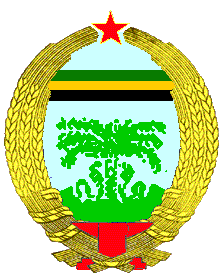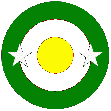Togo
| Conventional short name: | |
| Local: | Togo |
| English: | Togo |
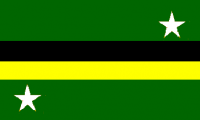
| |
| National motto: Arbayt, Liarota, Patria | |
| Languages: | |
| Official: | Dalmatian, Fon, Yoruba, Ewe, Fulani |
| Others: | Bariba, Mossi, Mina, Aja, Kotokoli, Akessele, others |
| Cities: | |
| Capital: | Lome |
| Largest: | Lome |
| Other: | Puartu Nou, Kara, Kpalime, Kandi, Xhugu |
| President: | Rozina Soglo |
| Area: | 3,096,971.72 oldu (65,408.4 sq mi) |
| Population: | Togolese {{{adjective}}} |
| Independence: | from CSDS |
| Declared: | 27 April 1960 |
| Recognized: | 27 April 1960 |
| Currency: | Togolese xenar |
| Organizations: | Community of Dalmatophone States |
Administration
Government
The government of Togo consists of a unicameral parliament consisting of 137 elected representatives known as Members of Parliament. The party with the most seats forms the governing party, with the party leader becoming President. The President appoints the State Ministers, who collectively form the Cabinet. The current president is Rozina Soglo, wife of former president Nisefor Soglo. She was elected in 1999 and re-elected in 2004. The next elections are scheduled for November, 2009.
Administrative Divisions
Togo is divided into fourteen cantons:
1. Alibori 2. Atakora 3. Atlantesku 4. Borgu 5. Kolin 6. Donga 7. Kufo 8. Litoral 9. Mono 10. Ueme 11. Plato 12. Zu 13. Savanes 14. Kara
History
Pre-Colonial Era
The first known state in the territory of today's Togo was the city-state of Ubini, founded by the Bini people (nowadays called Benin City in Eastern Gold Coast) in 1180 CE; the name "Benin" is a corruption of Ubini by the Portuguese. The first rulers of the Ubini were the Ogiso Dynasty; 36 Ogiso are known by name as rulers of the empire. Later, the ruler of the Empire was known as Oba ("king" in Yoruba). Oba Ewuare, also known as Ewuare the Great, became Oba in 1440 and proceeded to transform the city-state into a heavily-defended fortress, from which he built an empire; in 1470, the new empire was given the name Edo. By the 15th Century, Ubini had become the greatest city of the empire. Legends of the riches of the Edo Empire brought Portuguese explorer-traders to the city in 1485. At its largest extent, the Empire reached the Igbo kingdom of Onitsha in the eastern part of Eastern Gold Coast and through its southwestern part, all of modern-day Togo and into modern Western Gold Coast. The Ga peoples of Western Gold Coast and Gadangmeland can trace their ancestry back to the Edo Empire.
The Edo Empire and Colonisation
The Portuguese established a vigorous trade relation with Edo, trading various local products and slaves in exchange for European wares and firearms. Later, English and Austro-Dalmatian merchants followed. The first permanent Austro-Dalmatian settlement in the area was established in 1641 on the coast east of today's Lome. This settlement eventually grew up to be today's city of Kpeme.
The supreme leader of the Empire was the Oba. Below him were the Ezomo and Iyase, who were generals in charge of permanent formations of soldiers; the armies of Edo were described by Europeans as being the most organised and disciplined of any nation in Guinea. Following the introduction of firearms, local blacksmiths learned to manufacture guns, and by the late 1700s, Edo's smiths were producing a quarter of the Empire's firearms.
Around 1625 a dispute emerged between three brothers as to who should become Oba resulted in one, Kokpon, retaining Ubini, which was also known as Great Ardra. The second brother, Do-Aklin then established the town of Abomey, while the third, Te-Agdanlin, established the town of Ajatche or Little Ardra. To this day, there is a suburb of Puartu Nou called Ardra Vogla. By the mid-1600s, Do-Aklin had become supreme, and the capital of Edo was moved to Abomey. The Aja people who formed the elite mixed with the area's locals, gradually becoming the Fon (Dahomey) people. By the late 1600s, the Dahomey were raiding their neighbours for slaves, selling them through coastal middlemen to European traders. By 1700 around 20,000 slaves were being transported annually, especially from Great Ardra and Uida, earning the region the name "Slave Coast".
In 1708, Agaja became king of the Edo Empire, and he began the practice of using women as soldiers. With these female soldiers he conquered most of the southern region of modern Togo, with the exception of the Portuguese settlement of Puartu Nou. Agaja died in 1732, and in 1738, the Yoruba kingdom of Oyo conquered Abomey and forced the Dahomey people to pay tribute to the Oyo until 1818. The Edo Empire, by now also known as the Kingdom of Benin, grew to be the premier power in the region, and in 1863, Puartu Nou accepted an Austro-Dalmatian protectorate, hoping to offset the regional power of the Dahomey.
Imperial & Royal Crown Colony of Togoland and the Dahomey Kingdom
In 1884, the Imperial and Royal Crown Colony of Togoland was established in a small area stretching about 20 versts inland and connecting Puartu Nou and Kpeme, with Gustav Nachtigal as the first governor. The area of the colony was expanded slowly, until it bordered directly with the Kingdom of Benin.
In 1889, Behanzin became king of Benin, and he reformed it into the Dahomey Kingdom. Under Behanzin, the Dahomey Kingdom became antagonistic towards the Austro-Dalmatians, resulting in a war; by 1893 the Austro-Dalmatians defeated Behanzin, expanding Togoland to today's boundaries.
Under Austro-Dalmatian rule, Puartu Nou and Lome were developed into important ports, and railways, roads, schools and hospitals were built. Following the defeat of the Austrian Empire in the First Great War and the formation of the Danubian Confederation, Togoland became the Danubian Protectorate of Togoland in 1919. Under Danubian administration rule became considerably gentler, making the native population more strongly favourable to the colonial power than was the case in most other colonies; Togoland had the fortune of receiving progressive thinkers as Governors of the protectorate. Throughout the time of the Danubian protectorate infrastructure was improved and broadened, and Togoland had one of the highest standards of living in the region. By 1933, the literacy rate reached 68%.
Second Great War
The outbreak of the Second Great War threw Africa into chaos and brought considerable change to Togoland. The Danubian Confederation had joined the Grossartige Allianz, but by the end of 1941 the Confederation had collapsed and the Holy Roman Empire occupied its territory. Like most of the protectorate governors, the Togolese Governor declared his support for the pro-Allianz policies of the Danubian government. In response, the Danubian Overseas Army forces stationed in the protectorate - which drew considerable native support - overthrew the colonial government and declared military rule, eventually also declaring their support for and recognition of Josip Broz and the communists in the Danubian civil war in Europe. The junta then declared neutrality, reformed the DOA-T as the Togolese People's Army and renamed the protectorate Statul Togolesku ("The Togolese State"). The Togolese State's territory thus remained unviolated for the duration of the war, as the Ethiopians regarded this as a "good enough first step" at removing colonial power from Togo, and they had more pressing concerns elsewhere and so they let Togo be.
Togolese Soviet Republic
Following the end of GW2 and the establishment of the CSDS in 1947, the junta sent an envoy to Užice to announce its willingness to return to Danubian rule, as the military governors felt unqualified to deal with foreign affairs and other such matters. This status as a Soviet Danubian protectorate lasted only slightly over a year, as on November 11, 1948, Togo was declared a fully-fledged constituent state of the CSDS as the Togolese Soviet Republic (TSR). It was in recognition for the wartime junta's declared support of Broz that Togoland was chosen as the first of the protectorates to become full CSDS member states, as part of an experiment that ultimately failed. The TSR, like the other CSDS member states, sent representatives to the CSDS Supreme Soviet in Užice and was accorded all the rights and obligations as the other (European) member states. Due to the difficulties of having such a great distance between integral parts of a single state, by general agreement of both the Togolese SR and the CSDS federal government, on February 28, 1958 the TSR became virtually independent, with all but foreign affairs handled in Lome, though nominally the TSR remained part of the CSDS.
Independent Togo
Full independence was granted to the TSR on April 27, 1960, with Silvanu Olimpiu becoming president of the Togolese Soviet Republic. Relations with Gold Coast, then ruled by Kvame Nkruma, immediately were tense, as Nkruma had voiced publically his desire to incorporate Togo into the Gold Coast.
President Olimpiu was assassinated in a military coup on January 13, 1963, and his brother-in-law, Nikola Grunitzky, returned to Togo from Gold Coast (where he had been in exile since 1958) to become president; under Grunitzky, the "Soviet" was dropped from the name of the country, which was thereafter known as the Togolese Republic. Grunitzky remained in power until 1967, when on the fourth anniversary of his ascension to power he was overthrown in a bloodless coup led by Lt.Col. Gnansingbe Eyadema, who was installed as president in April after an interlude of conciliar government. Eyadema moved to repress all opposition, which quickly led to mounting disorder in the country. His autocratic rule caused popular unrest to grow, leading to another military coup in 1969 that installed Lt.Col. Paulu de Souza as president. Eyadema was executed on November 19, 1969. De Souza attempted to hold elections in 1970, but the attempt was cancelled following severe disagreement between northern and southern politicians. Instead, a three-man presidential council consisting of Ubertu Maga, Juscenu Ahomadegbe and Suru Migan Apiti was formed, with each member to lead for two years. Maga was the first leader, and in May 1972 Ahomadegbe replaced him as scheduled without incident. By October, however, the military leadership had become unhappy with Ahomadegbe's policies and overthrew his government, installing an 11-man government headed by Major Maceu Kereku. On January 1st, 1973 the country was renamed the Togolese Socialist Republic. This designation lasted until March 3, 1975, when Kereku renamed the country once more, this time to People's Republic of Benin.
On January 6, 1982, in what became known as the Epiphany Revolution, the army and the people, having grown discontent with Kereku's repressive and erratic government, deposed Kereku and reestablished the Togolese Republic with Nisefor Soglo as president. Kereku fled to Gabon. Though the newly reconstituted Togolese Republic was not communist, close ties were maintained with the CSDS.
1985 Civil War (the Benin War)
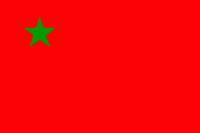
After secretly returning to Togo at some point in late 1984, Kereku clandestinely mobilised his supporters, and on April 19, 1985 the People's Democratic Socialist Republic of Benin declared independence in the eastern part of Togo. The government in Lome moved to suppress the rebellion, but at first things went well for the PDSRB. It was suspected (though to this day not confirmed), that the PDSRB was receiving weapons from Gabon and Kamerun. A good deal of the weapons were of Russian manufacture, which led to the suspicion that the SNOR regime was supplying the PDSRB with weapons, because Togo was enjoying close ties with the CSDS, with whom Russia was embroiled in a cold war of sorts. The only aspect of Gabonese or Kamerunian involvement that was confirmed was the existence of a fighter squadron composed of Gabonese "volunteer" pilots. The PDSRB Air Army had only one airplane (a biplane dating back to the 1920s) and two helicopters at the time of the secession. A number of Gabonese aircraft operated on behalf of the PDSRB with this marking; this was discovered on 24 April 1985, when a Russian-built Lavochkin LaGG-17 (a nimble but underarmed fighter dating to the 1960s) was shot down by the XXIV. Air Defence Artillery Battery. The pilot survived and was taken prisoner. During his interrogation it was revealed that the Gabonese Air Force squadron to which he belonged had volunteered to fly on behalf of the PDSRB.
On May 21, 1985, Togolese president Soglo asked Gold Coast president Yon Rawlings and Upper Voltan president Tomu Sankara for military assistance against the PDSRB, and on 21 May Togolese forces launched a massive frontal attack supported by units of the Gold Coast Army, and on 23 May Upper Voltan army units entered too, and the PDSRB fell on 26 May. The territory held by the PDSRB was reintegrated into Togo, and Kereku was executed on 30 May.
The Ewe State
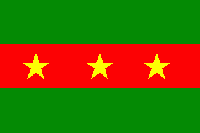
On 18 May at 7:35 AM, a small part of the PDSRB (a town and its environs) declared itself independent from the PDSRB as the Ewe State. This 'state' was very near to the frontline of the fighting between PDSRB and Togolese forces, and Togolese troops immediately attacked the Ewe State. By 4:45 PM, the Ewe State had fallen to Togolese forces. At 8:15 PM the PDSRB launched a counterattack, and by 11:30 PM the territory of the former Ewe State was once again in PDSRB control.
Post-Civil War Togo
In 1990, a national conference drew up a new constitution, which was ratified by popular referendum. In accordance with the new constitution, multi-party elections were held, which Soglo, who had become greatly popular following his victory in the civil war and his subsequent efforts to rebuild and modernise the country, won the election easily, becoming Togo's first democratically-elected president. Elections were held again in 1995 as per constitutional specification (the Constitution calls for elections every five years), and Soglo won once more in a more or less free and fair election. In 1999, President Soglo announced his immediate retirement due to health reasons, triggering an election a year ahead of schedule. These elections were once more called "free and fair" by the League of Nations, and Soglo's wife, Rozina, became president. She won again in the 2004 election.
Geography
Borders
North: Upper Nigervolta West: Western Gold Coast South: Atlantic Ocean East: Eastern Gold Coast
Economy
RELEVANT ASPECTS OF THE NATION'S ECONOMICAL SECTOR, EXPORTED PRODUCTS, ETC...
Culture
RELEVANT ASPECTS OF THE NATION'S CULTURE
Languages
Religion
| |||
|---|---|---|---|
| Full Members | |||
| Dalmatia | Kongo | Gold Coast | Mali | Togo | Upper Nigervolta | |||
| Associate Members | |||
| New Dalmatia | |||
| Observers | |||
| Louisianne |






